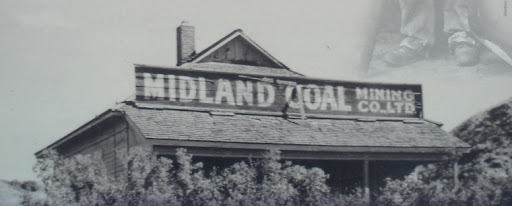Drumheller Coal EarthCache EarthCache
Drumheller Coal EarthCache
-
Difficulty:
-

-
Terrain:
-

Size:  (not chosen)
(not chosen)
Please note Use of geocaching.com services is subject to the terms and conditions
in our disclaimer.

This cache should be wheelchair accessible, so come enjoy this
historical site.
This earthcache and earthcache site will provide you with some
information about the formation of
coal in Alberta, and also some historical information about the
Midland Coal Mines that were near this site.
Coal is a fossil fuel mined from ancient deposits, and is the
world's most abundant fossil fuel. Canada holds close to 10 billion
tonnes of coal reserves, more energy than all of our oil, natural
gas and oil sands combined.
Coal has been burned for centuries as a source of heat and
energy.
It is a black mineral of plant origin which is chemically, a
complex mixture of elemental carbon, compounds of carbon containing
hydrogen, oxygen, nitrogen and sulphur.
Formation of coal
Coal is believed to have been formed about 300 million years ago
under the Earth by a process called carbonization.
Carbonization is the process of slow conversion of vegetable matter
to coal under the Earth due to the action of high pressure, high
temperature, anaerobic bacteria and absence of oxygen.
Types of coal
Depending upon the extent of carbonization, coal can be classified
into four types as follows:
Classification of coal in Canada:
| Type of Coal |
Carbon Content |
Commonly Known As |
| Peat |
11% |
- |
| Lignite |
38% |
Soft Coal/Brown Coal |
| Bituminous |
65% |
Houshold Coal |
| Anthracite |
96% |
Hard Coal |
Coal formation in Alberta.
Alberta contains vast amounts of coal distributed throughout the
southern Plains, Foothills and Mountains. About 68 million years
ago, a warm, temperate landscape provided both food and shelter for
the dinosaurs that roamed this area of Alberta. This vegetation
also provided the basis for coal, a valuable and plentiful natural
resource.
Huge ferns and giant trees grew in abundance in this moist, warm
climate. As the plants and trees died, their rotting remains sank
to the bottom of the vast steamy swamps. Layer upon layer
accumulated, eventually forming a soggy, dense organic material
called peat. Frequent floodwaters from inland seas, formed during
the melting of the Ice Age, and uplift (mountain building), in the
west covered the peat with sediment. As the weight of sedimentary
layers increased, the great pressure and heat turned the enormous
qunatities of peat into coal.
Over time, the coals were uplifted and partially eroded away,
resulting in the present distribution of coal across the
Plains.
Coal Mining in Alberta
The industry of coal mining brought thousands of people to the
province of Alberta and ushered in the fossil fuel era. Production
of coal for eastern Canadian markets served as a major building
block in Alberta's economy prior to the discovery of its vast oil
and gas fields.
Coal is found under much of Alberta's soil. Lignite and
sub-bituminous varieties are common on the prairies. Bituminous
coal is more often found in the mountains. Anthracite is present
only in small quantities in the mountainous regions.
There are two ways to remove coal from the ground: surface mining
and underground mining. Today, surface mining (which includes strip
and open pit mining) produces almost 90% of Alberta's coal. Surface
mining is also typically less expensive than underground
mining.
Surface mining is used when a coal seam is fairly close to the
surface. The coal seam is exposed for mining by first removing the
overburden - the soil and rock covering the coal. This is done
using a variety of equipment such as draglines, large stripping
shovels, and bulldozers.
Underground mining is used when the coal seam is buried several
hundred metres below the surface. Workers and machinery go down a
vertical shaft or a slanted tunnel called a slope to remove the
coal.
In order to log this earthcache, you must do the follow:
1) Take a picture of yourself and/or GPSr somewhere at the
earthcache site with a recognizable feature in the
background.
2) Email me the answer to the following question: Scientists
estimate how much compacted plant matter was required to produce 1
metre of coal? (The answer can be found on one of the information
boards around the site)
3) Email me the answer to the following question: What type of coal
is found in Drumheller? (The answer can be found on one of the
information boards around the site)
4) Email me the answer to the following question: What is the large
piece of machinery on display at the site called?
5) Email me the answer to the following question: Between 1912 and
1966, how many tons of coal did Drumheller produce? (The answer can
be found on one of the information boards around the
site)
I hope you enjoy doing my EarthCache.
Additional Hints
(No hints available.)